How Many Plants Animals And Microorganisms Became Extinct In 2011
The disappearance of 160 species has been declared by the IUCN over the last decade: about had been gone for a long time and their demise can be traced in big function to human impact. The full list of extinct species.
Much like expiry,extinction is part of life, an inevitable, natural miracle that has occurred cyclically throughout our planet'southward history. Approximately 99 per cent of species that have walked the Earth are now extinct, having disappeared because of changes in the surround or the appearance of new ones, leading to a abiding turnover. The rate of extinction, however, has never been equally high as information technology is today.
- Mammals
- Birds
- Reptiles
- Fish
- Invertebrates
- Plants
Life in the time of the sixth mass extinction
According to many experts, the 6th mass extinction is currently taking identify. The extent of disappeared species hasn't notwithstanding reached the threshold that characterised previous extinction events, but it's happening at a faster stride than ever before. Under normal atmospheric condition, the "rate of speciation, pregnant the birth of new species, is higher than the rate of extinction," writes science journalist Pietro Greco, and one to ten species disappear each year.
In the concluding one hundred years, however, these figures accept grown exponentially: the current charge per unit of extinction is estimated to be around chiliad species per yr. Human activities are, notoriously, the triggering factor backside this phenomenon. In a negligible corporeality of fourth dimension we've devastated entire ecosystems, hunted many animals to extinction, introduced invasive species, altered the chemical composition of the atmosphere and climactic and chemical residuum of the oceans.

Extinction is forever
The list of species that accept gone extinct, directly or indirectly, because ofHomo sapiens is immense, and requires constant updating. In that location's no way dorsum from extinction and the loss of a species determines the definitive disappearance of a particular tile in the mosaic of life, which had evolved and adjusted to a sure environment. Overall, information technology'southward a loss for all life on World.
The list of species declared extinct in the last decade
During the decade that just ended (2010-2019), the International Union for the Conservation of Nature (IUCN) declared the extinction of160 species. These are by and large little-known – perhaps not so charismatic – beings, such as many invertebrates, and most of them have been gone for a long fourth dimension. By and large, a species can be declared extinct with certainty only later on decades without it being sighted. Below is a list of the 160 plants and animals nosotros'll never see again.
Mammals
Bettongia anhydra (Desert bettong)
The small marsupial belonged to the Potorous genus. Scientists only always observed one specimen, in 1933, and it hasn't been seen since. It's believed that the decline of the species is linked to the arrival of mice and foxes to Australia. Information technology was alleged extinct by the IUCN in 2016.
Conilurus capricornensis (Capricorn rabbit-rat)
The small nocturnal rodent native to Commonwealth of australia, belonging to the Conilurus genus, was described thanks to the retrieval of fossilised remains. Scientists believe it went extinct because of the introduction of cats and changes in state utilise. The IUCN declared it extinct in 2016.
Dusicyon avus
This canid was once found in the grassy plains of Patagonia and the Pampas, in S America. Fossilised remains establish in tombs advise it may accept been domesticated. According to analyses of these fossils, it would appear that the species went extinct between 326 and 496 years ago, perchance considering of hunting and contest with domestic dogs. The species was added to the IUCN's list in 2015.

Leporillus apicalis(Lesser stick-nest rat)
These rats were known for building big nests in their native habitats in southern Australia. The species was already rare at the commencement of the 20th century and disappeared between the 1930s and 1940s, perhaps due to feral cats. The IUCN alleged information technology extinct in 2016.
Melomys rubicola(Bramble Cay melomys)
This small rodent can claim the unenviable posthumous title of existence the starting time mammal species to go extinct directly due to the effects of anthropogenic climate alter. Information technology lived exclusively on a pocket-sized coral isle in the Torres Strait between Australia and Papua New Guinea. The animal's habitat, limited to a surface surface area of under v hectares and an tiptop of less than three metres, suffered from increasingly frequent storms, which gradually destroyed the native vegetation on which the melomys depended. Scientists haven't spotted a specimen since 2009 and the IUCN declared the species extinct in 2016.
Read more: The first mammal has become extinct due to climate alter
Notomys robustus(Wide-cheeked hopping mouse)
The being of this rodent was discovered thanks to analysis of craniums constitute in wads of undigested prey regurgitated by southern Australian owls. The species is said to accept gone extinct in the 19th century and the IUCN added it to its listing in 2016.
Pennatomys nivalis(Nevis rice rat)
This rodent belonging to the Cricetidae family unit was the simply species in the Pennatomys genus. It lived in the Bottom Antilles and was part of the nutrition of indigenous inhabitants. Information technology'south probable to have disappeared post-obit the arrival of European colonisers and the non-native mammals they brought, such every bit rats and mongooses. It was officially declared extinct in 2011.
Pipistrellus murrayi(Christmas Isle pipistrelle)
Christmas Isle, an Australian territory in the Indian Ocean, was home to a pipistrelle alleged extinct in 2017. In 2008, the population was of only ten individuals. The last specimen of this small bat species, which used to be common on the island, was final seen in 2009. The causes of its extinction aren't however clear because the isle's forests accept mostly survived the inflow of humans. Scientists believe it may have suffered the introduction of non-native species such as the yellow crazy pismire (Anoplolepis gracilipes), oriental wolf snake (Lycodon capucinus), cats and rats. The growing apply of insecticides, such as Fipronil, may also have contributed to its decline.
Read more: The foreign ritual migration of fifty million ruddy crabs on Christmas Island
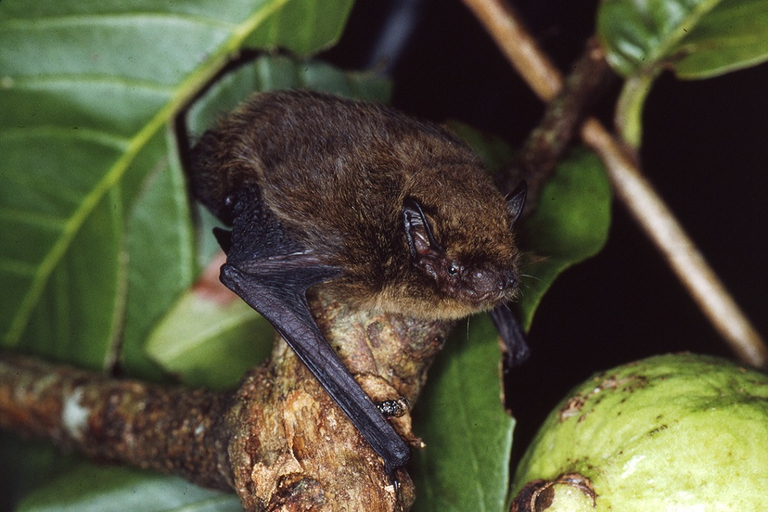
Pseudomys auritus(Long-eared mouse)
Scientists are aware of the former being of this large rodent thanks to specimens nerveless past naturalists in the 1800s. These animals used to alive in Australian forests and disappeared around 1850. The IUCN alleged the species extinct in 2016.
Sus bucculentus(Indo-Chinese warty grunter)
This species of wild hog used to live in Laos and Vietnam. It hasn't been seen since 1892, although some craniums institute in 1995 reignited hopes that the species might still be alive. However, according to genetic analysis the skulls were probable to vest to a different species of wild boar. Information technology was declared extinct by the IUCN in 2016.
Birds
Acrocephalus luscinius(Guam reed-warbler)
This pocket-size songbird lived in the wetlands of the isle of Guam, a US territory in Micronesia, in the western Pacific. Up to 1968 information technology was a quite common species only afterwards its numbers saw a steep decline as non-native species, such as cats, rats and mulga snakes, were introduced. The warbler besides suffered due to the destruction of its habitat and growing use of pesticides. Information technology seems to have disappeared in 1969 and was alleged extinct by the IUCN in 2016.
Acrocephalus musae (Forster's reed-warbler)
This bird used to inhabit the bamboo forests of ii French Polynesian islands. Information technology too didn't survive the introduction of cats and rats into its ecosystem, as well as the arrival of an Asian bird species that became its competitor, the mutual myna. The IUCN declared this warbler extinct in 2016.
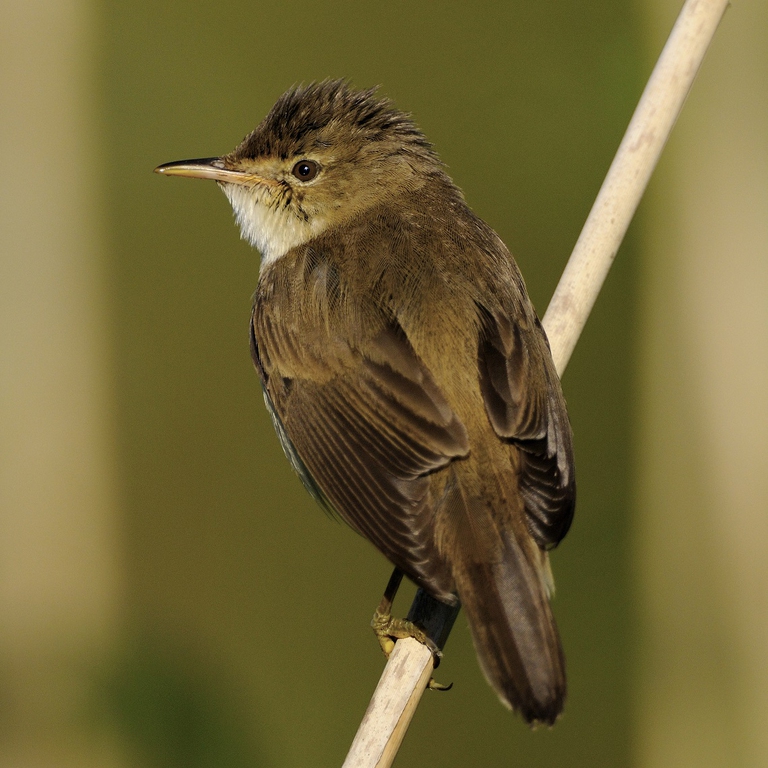
Acrocephalus nijoi(Aguijan reed-warbler)
This warbler belonged to the same family, Acrocephalidae, as the two birds higher up. Until 1995 information technology lived on Aguijan, an uninhabited islet belonging to the Northern Mariana Islands in the Pacific Body of water. Like many island species, these birds likewise went extinct because of the introduction of not-native species such as cats, rats and lizards by human being beings. The IUCN declared the species extinct in 2017.
Acrocephalus yamashinae(Pagan reed-warbler)
This passerine bird was once found in wetlands on the Northern Mariana Islands. The species went extinct before 1980 following the destruction of its frail habitat, which was so completely lost due to a volcanic eruption in 1981. It was alleged extinct in 2016.
Aegolius gradyi(Bermuda saw-whet owl)
The being of this small owl was only recently proven thanks to the report of fossil remains. It lived on the Bermuda Islands until the 17th century, until colonisers arrived and tore down the trees where it nested, likewise every bit introducing cats and rats. The IUCN declared information technology extinct in 2014.
Akialoa ellisiana(O'ahu 'akialoa)
The small bird belonged to the Fringillidae family unit – unremarkably known equally finches – and had a long, sparse and curved beak. It was native to Oahu island in the Hawaiian archipelago, and it was seen for the last time in 1894. This species was highly specialised, and its turn down was acquired past loss of habitat and the introduction of illnesses carried by mosquitoes. Information technology was declared extinct by the IUCN in 2016.
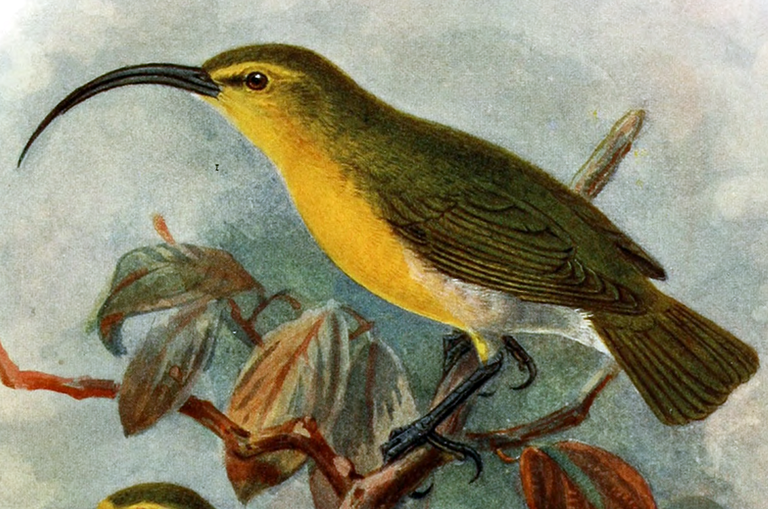
Akialoa lanaiensis(Lana'i 'akialoa)
Much like the greater 'akialoa, the Lana'i 'akialoa probably went extinct at the end of the 1800s due to the introduction of illnesses and destruction of the forests that gave it shelter and sustenance. It was declared extinct in 2016.
Akialoa stejnegeri(Kaua'i 'akialoa)
In dissimilarity to the 2 species above, the Kaua'i 'akialoa survived far into the 20th century: the last sighting was in 1969. For this bird too, withal, the combination of habitat destruction and the introduction of new species proved fatal. The IUCN declared it extinct in 2016.
Alectroenas payandeei(Rodrigues blue-dove)
The beingness of this bird belonging to the Columbidae family was revealed thank you to analysis of fossilised remains. The species used to inhabit the island of Rodrigues in the Indian Ocean. Information technology disappeared in the 17th century when passing sailors accidentally introduced mice to the island, causing a rapid turn down. The IUCN declared information technology extinct in 2014.
Aplonis ulietensis(Raiatea starling)
This bird once lived in French Polynesia and is known only thanks to an 18th century painting. It probably went extinct afterward humans introduced mice to the island, and its disappearance became official in 2016.
Bermuteo avivorus(Bermuda militarist)
This militarist was the last member of the Bermuteo genus. The existence of this bird of casualty was discovered thanks to the study of fossil remains dating back to the 17th century. It's believed to have disappeared due to hunting and the introduction of non-native species. The IUCN declared it extinct in 2014.
Chenonetta finschi(Finsch's duck)
The forests of New Zealand were one time home to a large duck that was virtually incapable of flight, a fact that scientists established thanks to fossils found on the island. The bird is thought to have gone extinct around 1500 considering of hunting and the introduction of invasive species. It was added to the IUCN's extinct species listing in 2017.
Coenocorypha barrierensis(Northward Island snipe)
This snipe native to New Zealand was seen for the last time in 1870. The introduction of mammals to the isle probably caused its extinction. The IUCN declared information technology extinct in 2016.
Coenocorypha iredalei(Southward Island snipe)
This bird, office of the sandpiper family (Scolopacidae) lived in New Zealand and didn't survive the introduction of invasive mammals, such as the black rat. The species was alleged extinct in 2016.
Colaptes oceanicus(Bermuda flicker)
A woodpecker native to Bermuda, the species was recently described thanks to the retrieval of fossilised remains. It'due south believed to have gone extinct in the 17th century post-obit the arrival of European colonists, who felled the trees it lived in and introduced non-native species. The bird was declared extinct by the IUCN in 2017.
Columba thiriouxi(Mauritius wood pigeon)
This small woods pigeon lived undisturbed on the island of Mauritius, in the Indian Body of water, until 1730. Its extinction was probably caused past hunting and the arrival of black rats. The IUCN declared it extinct in 2017.
Dryolimnas augusti(Reunion rail)
This flightless bird that looked similar to a chicken lived on the island of Réunion in the Indian Ocean. Declared extinct in 2014, it'southward believed to have evolved in the context of an almost total absence of natural predators, therefore defective the tools to defend itself against the cats and rats that humans introduced.
Eclectus infectus(Oceanic parrot)
Naturalists have but recently been able to depict this species of parrot thanks to the fossilised bones that were institute in the Tonga archipelago. Hunting and invasive species are said to have caused its extinction, which was confirmed by the IUCN in 2014.
Foudia delloni(Réunion fody)
This songbird institute on Réunion was known for crafting especially intricate nests. The introduction of mice to the isle past humans probably led to its extinction, which happened towards the finish of the 1600s. The IUCN added it to its extinct species list in 2016.
Hemignathus lucidus(Oahu nukupu'u)
Another Hawaiian bird with a long, curved beak, this nukupu'u was last observed at the end of the 19th century. Its disappearance was probably linked to deforestation and the introduction of invasive species like rats and mongooses, which too led to the proliferation of diseases. Its extinction was made official in 2016.
Himatione fraithii(Laysan honeycreeper)
This bird lived on the Hawaiian isle of Laysan and naturalists observed it for the last time in 1923. It disappeared considering rabbits introduced by humans destroyed the plants that information technology depended on for food. It was declared extinct by the IUCN in 2017.
Loxops wolstenholmei(O'ahu 'akepa)
No i has seen a specimen of this animal since 1930. Like other like species, this bird probably went extinct considering of the introduction of non-native species and the pathogens they brought. The IUCN declared it extinct in 2016.
Nesoenas Cicur(Mauritius turtle-pigeon)
This species was recently described thanks to remains found by scientists. It probably disappeared from Mauritius because of deforestation and rats. Information technology was declared extinct by the IUCN in 2014.
Nyctanassa carcinocatactes(Bermuda night heron)
This heron called the island of Bermuda its abode until the 17th century. Hunting and the arrival of non-native cats probably caused its extinction, which was fabricated official by the IUCN in 2014.
Pipilo naufragus(Bermuda towhee)
This passerine species was only recently described cheers to remains found in caves on Bermuda. Like other birds native to the island, it went extinct when feral cats were introduced into its habitat. The IUCN declared information technology extinct in 2016.
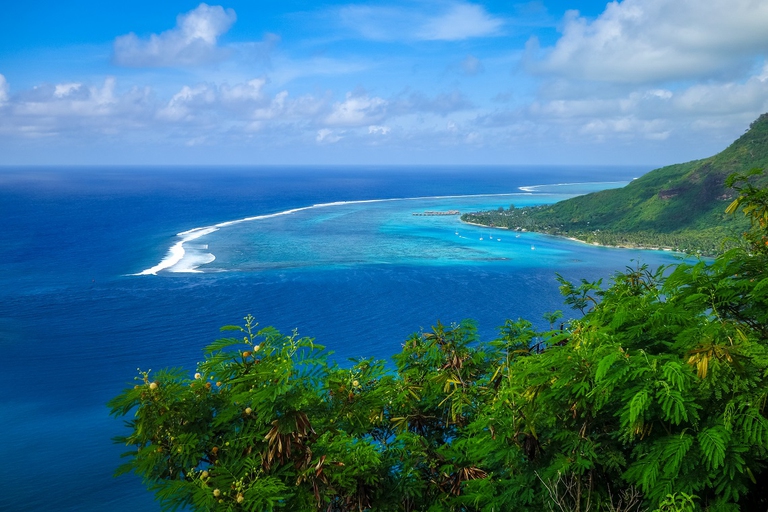
Porphyrio paepae (Marquesan swamphen)
Hunting and predation by cats and rats are likely to take acquired the extinction – certified by the IUCN in 2014 – of this modest Polynesian bird toward the terminate of the 1930s.
Prosobonia cancellata(Christmas sandpiper)
This aquatic sandpiper was native to Christmas Island and probably went extinct around 1850 because of invasive predators. The IUCN added it to the extinct species list in 2014.
Pyrocephalus dubius (San Cristòbal flycatcher)
This pocket-size, vivid-cerise bird of the Pyrocephalus genus was native to San Cristóbal in the Galapagos archipelago. It's believed to have gone extinct around the 1980s probably because of the introduction of rats and avian flu. The IUCN declared it extinct in 2016.
Tachybaptus rufolavatus(Alaotra grebe)
This aquatic bird used to populate the waters of Lake Alaotra in Madagascar. The last confirmed sighting happened in 1982 and the IUCN alleged it extinct in 2010. Various factors combined in bringing about this bird's demise. Invasive institute and fish species compromised its food sources, while agriculture and soil erosion acquired by deforestation contradistinct the quality of the h2o in which information technology lived.
Tribonyx hodgenorum(Hodgen'due south waterhen)
Remains of this waterfowl dating dorsum to the 17th century were discovered past scientists on certain islands in New Zealand. The species was declared extinct in 2014, a loss likely caused by hunting by European colonists and the arrival of rats.
Zosterops conspicillatus(Bridled white-eye)
This passerine bird of the Zosteropidae family was native to the North Mariana Islands. At i point it even populated urban areas, but the introduction of non-native snake species caused it to quickly go extinct. The concluding sighting dates back to 1983 and the species was alleged extinct by the IUCN in 2016.
Zosterops semiflavus(Marianne white-middle)
This bird, which used to live on several islands in the Seychelles, probably went extinct around 1888 due to the negative consequences of the introduction of invasive species into its habitat. Its disappearance was made official by the IUCN in 2016.
Reptiles
Alinea luciae (St. Lucia skink)
Until 1937 this small reptile of the skink family lived on the Caribbean island of Saint Lucia. Subsequent attempts to find information technology there proved fruitless, as it is believed the species succumbed to the introduction of the mongoose. Information technology was alleged extinct in 2015.
Chelonoidis abingdonii(Pinta Island tortoise)
Of all the species on this list, this is undoubtedly the most well-known and charismatic. The giant Pinta Isle tortoise was a sub-species of the Galapagos tortoise. This enormous reptile was decimated past hunting and the introduction of goats to the island, which led to competition for food. The last specimen we're aware of was known as Lonesome George; he was believed to exist over a hundred years old when he died in 2012. The IUCN declared the species extinct in the wild in 1996.
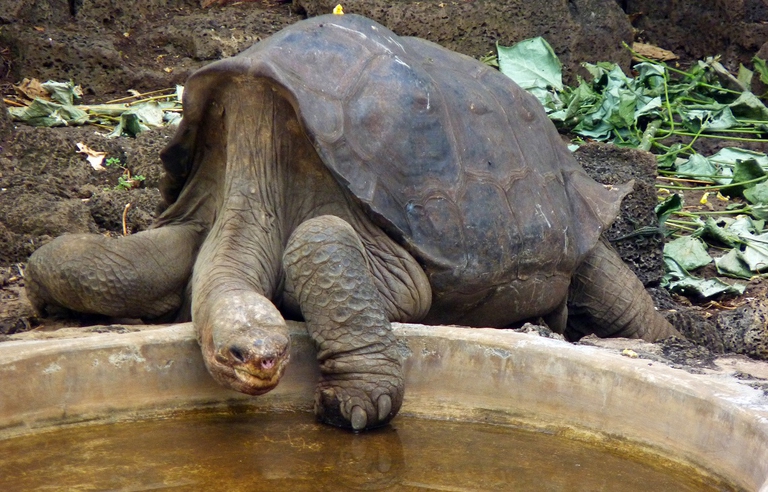
Clelia errabunda(Underwood's mussurana)
This large snake native to the Caribbean area isle of Saint Lucia went extinct effectually 1800. The reason isn't clear, although the touch on of anthropic activities on the island is likely to have irreparably altered its habitat. The IUCN declared it extinct in 2016.
Contomastix charrua
This species of lizard was spotted for the terminal time in 1977, perched on a granite outcrop in the Uruguayan coastal city of Cabo Polonio. It probably went extinct due to growing anthropic disturbance during its reproductive season acquired mainly by tourism. The IUCN alleged it extinct in 2016, even though it isn't clear whether information technology was actually a species in its own right or rather a variation of another similar species of lizard.
Copeoglossum redondae(Redonda skink)
This pocket-sized reptile lived on the rocky, uninhabited Caribbean island of Redonda in the Antilles archipelago. It was described for the first time in 1863 but it suffered a rapid decline due to the introduction of goats and rats. Its terminal sighting was in 1873 and the IUCN declared information technology extinct in 2016.
Cyclura onchiopsis (Navassa rhino iguana)
The final specimen of this reptile was seen in 1878, and there are two hypotheses regarding the crusade of its extinction: some believe that not-native mammals like cats and goats took over its environment, while others claim that miners who worked on the isle deliberately exterminated information technology. The species was alleged extinct in 2011.
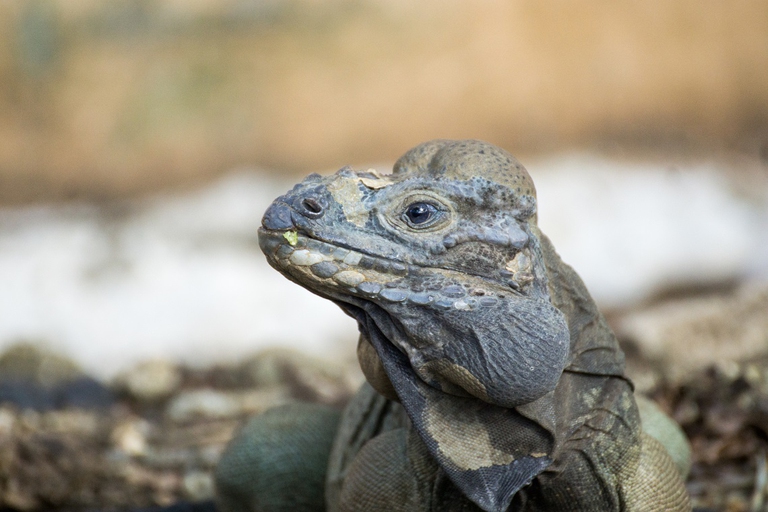
Emoia nativitatis(Christmas Island whiptail-skink)
At one fourth dimension this lizard was common in the lush forests of Christmas Island, due south of Republic of indonesia, in the Indian Ocean. Researchers began to notice its decline in 1998, caused by various factors such every bit loss of habitat and the introduction of non-native predators. A mere seven years later it could no longer be observed in the wild. The last known specimen was a female named Gump, who died in captivity in 2014. The IUCN declared the species extinct in 2017.
Erythrolamprus perfuscus (Barbados racer)
This snake native to Barbados hasn't been observed since 1963. It probably went extinct due to intense urban development and the introduction of mongooses, cats and rats. It was declared extinct in 2016.
Leiocephalus cuneus
This large lizard lived on four islands in the Bottom Antilles at least until the 17th century. After this, populations gradually declined into oblivion because of the introduction of mice. The IUCN alleged it extinct in 2016.
Leiolopisma ceciliae(Réunion giant skink)
This small-scale skink, known simply thanks to fossil remains, probably went extinct at to the lowest degree 300 years ago, although it was just added to the IUCN'south listing in 2019.
Nactus soniae(Réunion nactus)
This species of gecko lived on Réunion isle until the 1500s and has been described thanks to fossilised remains. Information technology likely went extinct because of invasive species, equally officialised past the IUCN in 2019.
Scelotes guentheri(Günther'south dwarf burrowing skink)
A rather large reptile belonging to the skink family, it hasn't been observed in over 150 years and was declared extinct by the IUCN in 2017.
Fish
Alburnus nicaeensis(İznik shemaya)
This modest freshwater fish of the Cyprinidae family was native to Lake İznik, in Turkey. It disappeared around the end of the 20th century considering of the introduction of another species of fish,Atherina boyeri,into its habitat by fishermen. The IUCN declared information technology extinct in 2014.
Anabarilius macrolepis
Another member of the Cyprinidae family, this fish lived exclusively in Yilong Lake, China. Due to heavy water employ for agronomics, the lake stale up for over twenty days in 1981. The species hasn't been seen since and the IUCN declared it extinct in 2011.
Aphanius splendens(Gölçük killifish)
Native to Lake Gölçük, a volcanic mountain lake in Turkey, this species went extinct in the 1980s due to non-native fish being introduced to boost fishing activities. Information technology was declared extinct in 2014.
Atherinella callida(Cunning silversid)
This small fish belonging to the Actinopterygii class lived in the waterways around the Mexican city of Veracruz. Information technology was seen for the last time in 1957 and probably went extinct due to habitat degradation, water pollution and dam construction. The IUCN alleged it extinct in 2019.
Cyprinodon arcuatus(Santa Cruz pupfish)
This minor fish of the Cyprinodontidae family was native to the Santa Cruz River in the US country of Arizona. Its definitive disappearance was caused by the growing diversion of water for agronomics and introduction of the largemouth bass. The IUCN added information technology to the listing of extinct species in 2013 later on decades passed from its last sighting.
Labeo worthingtoni
This fish of the Cypriniformes order lived at the lesser of Lake Malawi in fundamental Africa, where it was final observed in 1932. The causes of its disappearance aren't known and it was alleged extinct in 2018.
Megupsilon aporus(Catarina pupfish)
The Catarina pupfish was a small fish native to a jump in the Mexican region of Nuevo León. Human consumption of groundwater tuckered the body of water and reduced the species' population. The fish'south survival was ultimately compromised by the introduction of invasive species and no specimen has been seen in the wild since 1994. This led to the species being declared extinct in 2019.
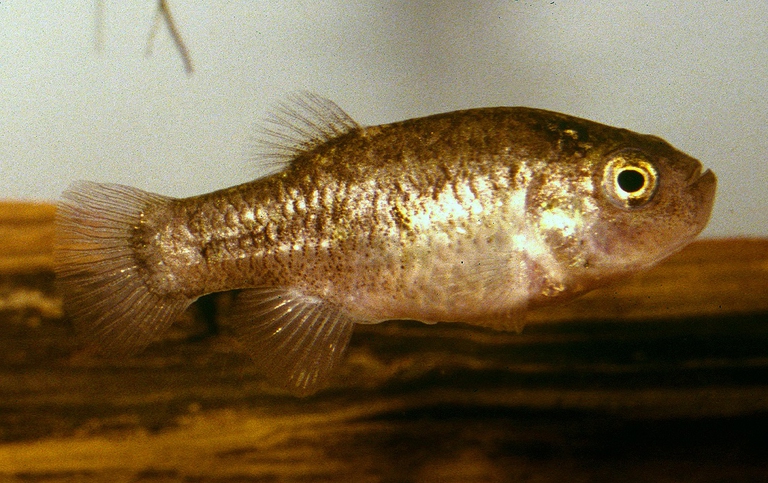
Noturus trautmani(Scioto madtom)
This fish was simply ever establish in a single river in the US state of Ohio, the Big Darby Creek. It hasn't been seen since 1957, only the reasons leading to its extinction are still unknown. The IUCN declared it extinct in 2013.
Platytropius siamensis(Siamese apartment-barbelled catfish)
This catfish lived in the rivers and wetlands of Thailand and hasn't been seen since 1977. Dam construction, the destruction of many wetlands and growing pollution levels are believed to have acquired its extinction, officialised by the IUCN in 2011.
Pseudophoxinus handlirschi(Egirdir minnow)
This fish lived exclusively in Lake Eğirdir, in Turkey. Biologists oasis't spotted whatsoever since the 1980s and its disappearance is linked to the introduction of bass to the lake. The IUCN declared it extinct in 2014.
Tristramella sacra(Long jaw tristramella)
This species of fish belonging to the Cichlidae family lived in the Sea of Galilee, in State of israel. According to the IUCN, which declared information technology extinct in 2014, the last specimen was sighted in 1990 and the destruction of its marshy habitat acquired its demise.
Invertebrates
Bradycellus chavesi(São Miguel ground-protrude)
This beetle of the Carabidae family unit lived in a pocket-sized parcel of state on the isle of São Miguel, in the Azores. It was a victim of climate change, which led to increased drought in the surface area. The last fourth dimension information technology was observed by naturalists was in 1919 and the IUCN alleged it extinct in 2018.
Bythinella gibbosa
This small freshwater snail once lived in the waterways around Toulouse, France. Equally the urban center gradually expanded, and many streams and creeks were destroyed, the species went extinct. It hasn't been observed for fifty years and was alleged extinct in 2010.
Bythinella limnopsis, Bythinella mauri tanica, Bythinella microcochlia, Bythinella punica
Naturalists classified these four species of freshwater snail institute in various springs in Tunisia in the 19th century. The reasons backside their disappearance aren't clear. The IUCN declared them extinct in 2010.
Calathus extensicollis(Pico footing protrude)
This large footing beetle was native to the high-altitude forests on Pico Isle, in the Azores archipelago. Over 150 years take passed since the last sighting and the IUCN declared the species extinct in 2018.
Calathus vicenteorum(Santa Maria ground beetle)
Like the species above, this footing beetle also lived in the mountain forests of the Azores, on the island of Santa Maria in detail. Its extinction was probably linked to climate change having led to an increase in drought episodes on the island. It was alleged extinct by the IUCN in 2018.
Cambarellus alvarezi
Until 1989 the population of this freshwater crayfish was stable, simply water employ by local farmers drained the only pond information technology inhabited, leading to its extinction, which was fabricated official past the IUCN in 2010.
Cambarellus chihuahuae(Chihuahuan dwarf crayfish)
This small crayfish lived in a single bound in the Mexican desert, which was also drained for agricultural utilize. The IUCN declared information technology extinct in 2010. In 2015, a team of scientists claimed to have establish a population living in a pond in the Chihuahua desert, which is also at run a risk of drying up.
Centrobunus braueri
This spider lived in the forests of Mahé island, in Republic of seychelles. The final specimen was observed in 1894, as its habitat was being destroyed by the invasion of cinnamon plants. The IUCN declared it extinct in 2014.
Chambardia letourneuxi
This mussel, which used to be common in the Nile delta, hasn't been observed since the showtime of the 20th century. It was declared extinct by the IUCN in 2010.
Dicrogonatus gardineri(Gardiner's behemothic mite)
This giant acarid lived in the tropical forests of Mahé isle, in Seychelles. The species hasn't been seen since 1909 and is believed to have disappeared due to the destruction of its habitat. The IUCN alleged it extinct in 2014.
Eucarlia alluaudi
This millipede lived on the small isle of Marianne in the Seychelles archipelago until 1892. The island was completely taken over by humans for farming purposes, after which information technology was abandoned, leaving numerous invasive plants behind. The IUCN declared it extinct in 2014.
Galba vancouverensis
This freshwater snail lived on Vancouver Island and the San Juan Islands in Washington land, in the U.s.a.. Scientists lost rails of it in 1939 – it probably disappeared due to pollution and the expansion of homo activities. The IUCN declared information technology extinct in 2017.
Geonemertes rodericana
This worm was seen just once in 1918 in the rainforests of Rodrigues island, Mauritius. Its habitat was razed to the ground for agricultural purposes, causing its extinction, which was fabricated official by the IUCN in 2014.
Germainaia geayi
Scientists know little about this bivalve mussel from Madagascar and the IUCN declared the species extinct in 2016.
Heleobia spinellii
A freshwater mollusc native to Italy, its presence had been recorded at a few locations between Lake Garda and Lake Idro but it hasn't been observed since 1850. Information technology was alleged extinct by the IUCN in 2010.
Hirstienus nanus
Not much is known near this spider who lived on the island of Mahé, in Seychelles. It was observed for the concluding fourth dimension in 1908 and the IUCN declared information technology extinct in 2014.
Islamia ateni
This mollusc, whose habitat was a single jump in Spain, was lost because of a road being congenital near the area where it lived. The IUCN declared it extinct in 2011.
Labidura herculeana(St. Helena giant earwig)
This species was the largest earwig in the globe, establish on the island of Saint Helena in the southern Atlantic. It could abound over viii centimetres in length, and was seen for the last time in 1967. Its extinction – confirmed past the IUCN in 2014 – was caused by utilise of the rocks it inhabited in construction activities, every bit well as competition with non-native species brought by humans.
Leiorhagium solemi
This mollusc found in New Caledonia was seen for the last fourth dimension in 1928. The development of human settlements, which caused many springs to dry up and the felling of big wooded areas, probably led to its extinction, officialised by the IUCN in 2011.
Macrobrachium leptodactylus
But one specimen, plant in 1888 on the isle of Java in Indonesia, of this freshwater shrimp has always been nerveless. The IUCN declared it extinct in 2013.
Margatteoidea amoena
This species of cockroach was described following the discovery of a single specimen on the Seychelles island of Desroches in 1905. It was alleged extinct in 2012.
Melanoplus spretus(Rocky mountain locust)
The extinction of this grasshopper demonstrates the affect humans have on other species. It used to be one of the near common invertebrates in North America: a study from 1875 describes an uninterrupted swarm extending 160 kilometres wide and 2,800 kilometres long. The causes of the quick population decline aren't clear but are probably linked to changes in land use and farming activities on their mating grounds. The IUCN declared information technology extinct in 2014.
Mercuria letourneuxiana
Declared extinct in 2010, this mollusc lived in a single thermal spring in the Algerian region of Annaba. It is known but thanks to documents dating back to the 19th century.
Metazalmoxis ferruginea
This spider was native to Mahé isle, in Seychelles, and probably went extinct due to the introduction of invasive plants to the island. It hasn't made an advent since 1892 and the IUCN declared it extinct in 2014.
Neocnemis occidentalis(Santa Maria weevil)
This insect was native to a minor wood on the island of Santa Maria, in the Azores. A large portion of its habitat was lost due to deforestation and climate change. Naturalists oasis't spotted ane since 1867 and the IUCN alleged it extinct in 2018.
Neoplanorbis tantillus(Little apartment-top snail)
This aquatic snail lived only in the Coosa River in the US state of Alabama. A serial of dams built along the waterway between 1914 and 1967 irreparably damaged and bankrupt upwards its habitat, causing its extinction –declared past the IUCN in 2012.
Orthomorpha crinita
A species of millipede native to Mahé, in Seychelles. Like other species native to the island, this invertebrate probably went extinct following the inflow of invasive plants brought past humans. The IUCN declared it extinct in 2014.
Pacifastacus nigrescens(Sooty crayfish)
This crustacean belonging to the Astacidae family lived merely in waterways around San Francisco Bay, in the US. It was described in 1857 but wasn't sighted throughout the whole of the 20th century. Its turn down has been linked to the arrival of invasive fish species and urban development in the Bay Area. The species was alleged extinct in 2010.
Peromona erinacea
Like other species of spider on this list, this one – native to the island of Mahé – went extinct due to the introduction of invasive plants by humans. The IUCN declared information technology extinct in 2014.
Plectostoma sciaphilum
This species of snail was observed simply in a limited role of Malaysia. Its habitat was literally razed to the ground at the beginning of this century by a construction company. The IUCN declared it extinct in 2014.
Pleorotus braueri
Declared extinct in 2014, this spider was also native to Mahé isle and paid a dear cost for the arrival of invasive plants that compromised its habitat.
Pleurobema perovatum(Ovate clubshell)
This freshwater mussel lived in some parts of the Mississippi River and the Mobile River Bowl, in Alabama, in the US. It hasn't been observed since the beginning of the last century and the IUCN declared information technology extinct in 2012.
Procambarus angustatus(Sandhillls crayfish)
A species of Georgian crayfish described in 1958 by a biologist who institute a single specimen. Information technology has never been observed since, and the IUCN declared it extinct in 2010.
Pseudamnicola barratei , Pseudamnicola desertorum, Pseudamnicola doumeti, Pseudamnicola globulina, Pseudamnicola latasteana, Pseudamnicola oudrefica, Pseudamnicola ragia, Pseudamnicola singularis
In 2010 the IUCN declared these eight species of h2o snails extinct. These gastropod molluscs were extremely sensitive to environmental changes in the springs they inhabited, and are believed to have disappeared during the 19th century.
Sitalcicus gardineri
This spider of the Podoctidae family also lived on the island of Mahé, in Seychelles. Information technology was observed for the last fourth dimension in 1908 and disappeared with the destruction of its ecosystem. The IUCN declared it extinct in 2014.
Spirobolellus praslinus
Biologists last saw this millipede in 1902. It lived on the island of Praslin, in Seychelles. Invasive plants destroyed its native habitat, leading to its extinction, which was ratified by the IUCN in 2014.
Stagnicola pilsbryi
This freshwater gastropod lived in a single spring in the The states land of Utah. It hasn't been observed since 1968 and its disappearance seems to take been linked to the degradation of its surroundings. It was alleged extinct past the IUCN in 2012.
Stipax triangulifer
This was the merely known species of spider in the Sparassidae family. Like many other invertebrates native to the island of Mahé nowadays on this list, it probably went extinct considering of invasive plants taking over its habitat. The IUCN declared it extinct in 2014.
Thomasettia seychellana
Another spider that lived on the island of Mahé until the arrival of humans and the invasive found species they introduced to the Seychelles archipelago. The IUCN declared the species extinct in 2014.
Tokea orthostichon(Schmarda's worm)
A scientist establish a single specimen of this earthworm over 150 years ago on Mountain Wellington, nigh Auckland, in New Zealand. Its extinction, made official past the IUCN in 2017, is probably linked to the arrival of European colonists and the crops they introduced.
Unio madagascariensis
This mussel lived in rivers near the southern coast of Madagascar. Co-ordinate to biologists, in the 1800s it was "relatively abundant". Pesticides and agricultural wastewater probably caused its extinction, declared by the IUCN in 2016.
Unio malgachensis
The taxonomy of this bivalve mollusc is notwithstanding uncertain; only one specimen was ever found, in Madagascar, in 1909. The species hasn't been observed since and was declared extinct by the IUCN in 2016.
Vitrea storchi
Only one specimen of this snail has e'er been found, lifeless, on the rocky island of Chios in the Aegean Sea. The IUCN alleged it extinct in 2017.
Zonites santoriniensis
This land snail is simply known to scientists through fossils constitute on the Greek island of Santorini, and information technology probably went extinct post-obit a volcanic eruption over 1,400 years ago. The IUCN alleged it officially extinct in 2017.
Zonites siphnicus
No specimen of this small gastropod, which used to inhabit three islands in the Aegean Sea, has been observed since 1935. The species was declared extinct in 2017.
Plants
Acalypha dikuluwensis
This plant was native to the Katanga Plateau in the Autonomous Republic of Congo and was terminal seen in 1959. Its extinction, which the IUCN declared in 2012, was probably caused by the large-calibration extraction of copper in the region.
Acalypha wilderi
This modest bush-league grew but in the wooded parts of Rarotonga, one of the Cook Islands, in the South Pacific. It was final seen in 1929 and the IUCN declared information technology extinct in 2014.
Amaranthus brownii
This modestly-sized plant of the Amaranthaceae family unit used to grow on the minor uninhabited Hawaiian island of Nihoa, where it was last seen in 1983. Living on a tiny remote isle in the vastness of the Pacific Ocean didn't protect it from the invasiveness of our species: humans introduced plants that ultimately led to its extinction, which the IUCN declared in 2018.
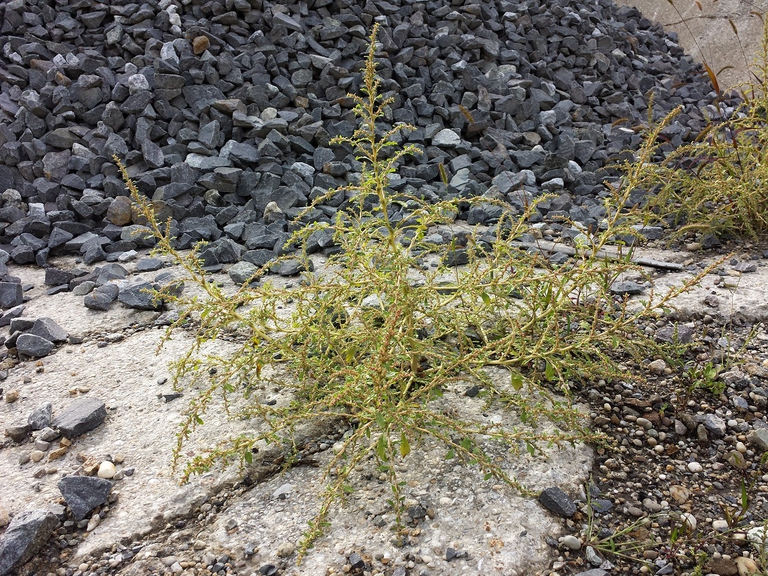
Angraecopsis dolabriformis
This plant is known cheers to a unmarried specimen constitute in 1982 on the island of São Tomé e Principe, off the Atlantic declension of central Africa. It'south believed that the destruction of its habitat over the past two centuries led to its extinction, which was officialised by the IUCN in 2018.
Angraecum astroarche
But one specimen of this orchid was ever constitute, in the 19th century, on the island state of São Tomé e Principe. It hasn't been observed since and the IUCN alleged the species extinct in 2018.
Basananthe cupricola
This establish grew just in a limited region of the Autonomous Republic of Congo, requiring detail soil weather to flourish. These conditions were irreparably altered by the intense mining that has been carried out in the region. The species was declared extinct in 2012.
Centaurea pseudoleucolepis
This plant used to grow near the coastline of the Azov Sea, in Ukraine. Naturalists haven't observed it since 1930 and the IUCN declared it extinct in 2011.
Cyanea eleeleensis, Cyanea linearifolia , Cyanea mauiensis, Cyanea minutiflora, Cyanea parvifolia, Cyanea sessilifolia
This varied group of shrubs of the Cyanaea genus was known to have grown in boiling Hawaiian forests. After much fruitless searching, the IUCN declared all half dozen species extinct in 2016. Their disappearance was caused by invasive brute and plant species introduced by humans, including pigs, goats, rats, snails and various weeds.
Cyperus rockii(Kaua'i flatsedge)
This plant grew along a stream that crosses the Hawaiian isle of Kaua'i. It was last observed in 1916 and probably went extinct due to the introduction of invasive establish species and pigs. The IUCN alleged it extinct in 2016.
Cyrtandra olona
The terminal fourth dimension this shrub was observed on the mountains of Kaua'i was in 1909, and information technology likely disappeared due to competition with non-native plants introduced by humans. It was added to the IUCN's extinct species list in 2016.
Delissea sub cordata, Delissea undulata
These ii shrubs of the Delissea genus grew in Hawaiian lowland forests, and their extinction – officialised by the IUCN in 2015 and 2016 respectively – was caused by invasive plants and animals introduced by humans.
Eulophia stenopetala
This orchid was observed just one time past scientists, on the barren hills of Bhutan in 1859. Surveys of its habitat made since have been fruitless. The crusade of its extinction, declared by the IUCN in 2017, is uncertain.
Euphrasia mendoncae
Naturalists first observed this plant in 1936 in Portugal's high-distance grasslands. It hasn't been seen since, and the IUCN added information technology to the extinct species list in 2011.
Fissidens microstictus
This moss used to be very common on the Portuguese island of Madeira, but it suffered a rapid decline caused by the growing influx of tourists. It hasn't been observed since 1982 and the IUCN declared it officially extinct in 2019.
Habenaria petromedusa
This plant inhabited the islands of Cabo Verde, in the Atlantic Ocean, and is known thank you to a unmarried specimen retrieved in 1787. The IUCN declared it extinct in 2017.
Heliotropium pannifolium(St. Helena heliotrope)
A flowering shrub native to the remote island of St. Helena in the southern Atlantic. The introduction of goats and competition with invasive plants are probable to have destroyed its habitat. The species was declared extinct in 2016.
Hibiscadelphus woodii(Wood's hau kuahiwi)
This shrub with vivid yellow flowers used to grow on the Hawaiian island of Kaua'i, one of the terminal survivors of a disappearing genus. Goats, pigs and invasive plants caused its extinction in the wild. Or at least this was thought to exist the instance until a few months agone: in 2019, researchers found 3 specimens on a rocky outcrop of the island using drones.
Lepidium amissum(Waitakere scurvy grass)
This grass of the Brassicaceae family was discovered merely later its extinction, which happened in the early 1900s and was made official by the IUCN in 2014. Coastal degradation was the principal reason for its disappearance.
Lepidium obtusatum
This coastal grass was final observed in New Zealand in 1950 and the IUCN declared it extinct in 2014.
Logania depressa
Naturalists observed this plant for the first and last fourth dimension in New Zealand's prairies in 1847. Since then, the species has never been found over again and the IUCN declared information technology extinct in 2014.
Melicope macropus(Kaholuamanu melicope)
The disappearance of this citrus constitute, which used to grow in Kalalau Valley on the Hawaiian island of Kaua'i, was caused by the introduction of non-native herbivores such as goats, pigs and deer, which devastated the native vegetation. The species hasn't been observed in the wild since 1995 and was declared extinct by the IUCN in 2016.
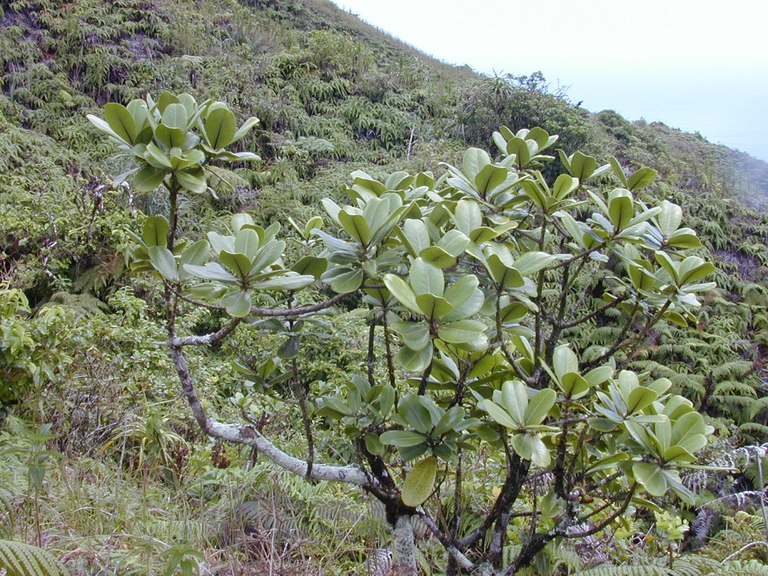
Melicope nealae
Another citrus species that inhabited the mount forests of Kaua'i. Naturalists oasis't observed it since 1960 and it was declared extinct in 2016.
Miconia abscondita
This small tree grew on the steep slopes of Flick Macaya, the second-highest meridian in Republic of haiti. The species was merely described in 2015, based on a specimen collected in 1926, merely information technology hasn't been observed since. The IUCN declared it extinct in 2018.
Myosotis laingii(Waiautoa forget-me-not)
This flower of the Boraginaceae family inhabited an island in New Zealand. Information technology was concluding seen in 1912 and was declared extinct in 2014.
Nobregaea latinervis
A moss belonging to the Brachytheciaceae family, this species was once found at the margins of laurel forests in the northeastern part of Madeira, in Portugal. Information technology hasn't been observed since 1946 and was declared extinct past the IUCN in 2019.
Ornithogalum visianicum(Visiani'due south star of Bethlehem)
This plant of the Asparagaceae family used to grow on an uninhabited island off the declension of Croatia, just it hasn't been observed by scientists since 1911. Its habitat has remained mostly unaltered so the cause of its extinction, made official by the IUCN in 2018, is unknown.
Sanicula kauaiensis(Kaua'i blacksnakeroot)
Another plant native to the Hawaiian island of Kaua'i, this perennial herb grew on steep grassy slopes. It hasn't been observed since the 1950s and its decline was probably caused by contest with invasive plants introduced by humans. The IUCN declared it extinct in 2016.
Schiedea amplexicaulis(Ma'oli'oli)
Like other plants native to the Hawaiian archipelago, this species inhabiting the island of Kaua'i disappeared due to invasive species being introduced. Final observed around 1850, the IUCN declared it extinct in 2016.
Stachytarpheta fallax
This species is only known thank you to a few specimens nerveless in 1908 on the islands of Cabo Verde. It hasn't been observed since and the IUCN alleged information technology extinct in 2017.
Stellaria elatinoides
This spermatophyte of the Caryophyllaceae family unit used to abound along the banks of lakes and rivers in New Zealand. It disappeared former around the 1940s post-obit the introduction of invasive weeds that contradistinct its ecological niche. The IUCN added it to its extinct species list in 2014.
Trilepidea adamsii(Adams mistletoe)
This shrub inhabited forest margins on New Zealand's Northward Island. It was last observed in 1954 and may accept disappeared due to a combination of factors, namely habitat degradation, the decline of pollinating insects and appearance of invasive species such as possums. The IUCN declared the species extinct in 2014.
Viola cryana(Pensée de Cry)
This flower of the Violaceae family unit grew exclusively on the limestone hills of France's Bourgogne-Yonne department. It hasn't been observed since 1927 and its decline is linked to excessive limestone extraction in the area. The IUCN declared it extinct in 2011.
Wikstroemia hanalei(Lavafield faux ohelo)
There have been no observations of this shrub, native to the Hawaiian island of Kaua'i, since 1897. Its extinction was probably caused past contest with non-native species and was made official past the IUCN in 2016.
Translated by

Quest'opera è distribuita con Licenza Creative Commons Attribuzione - Non commerciale - Not opere derivate 4.0 Internazionale.
Source: https://www.lifegate.com/extinct-species-list-decade-2010-2019
Posted by: rhoadsaftearany.blogspot.com

0 Response to "How Many Plants Animals And Microorganisms Became Extinct In 2011"
Post a Comment